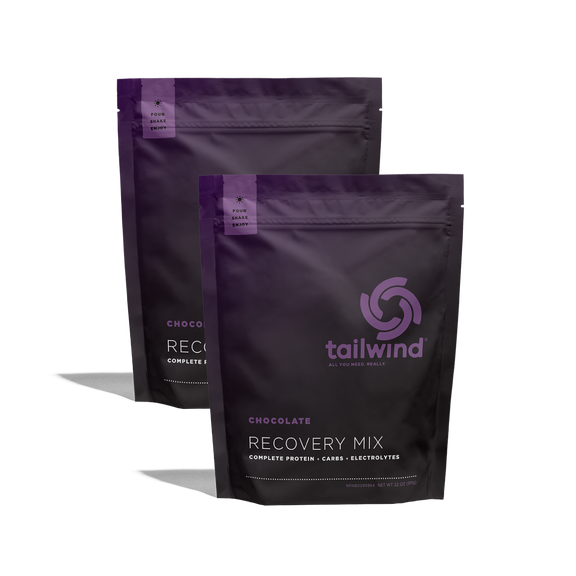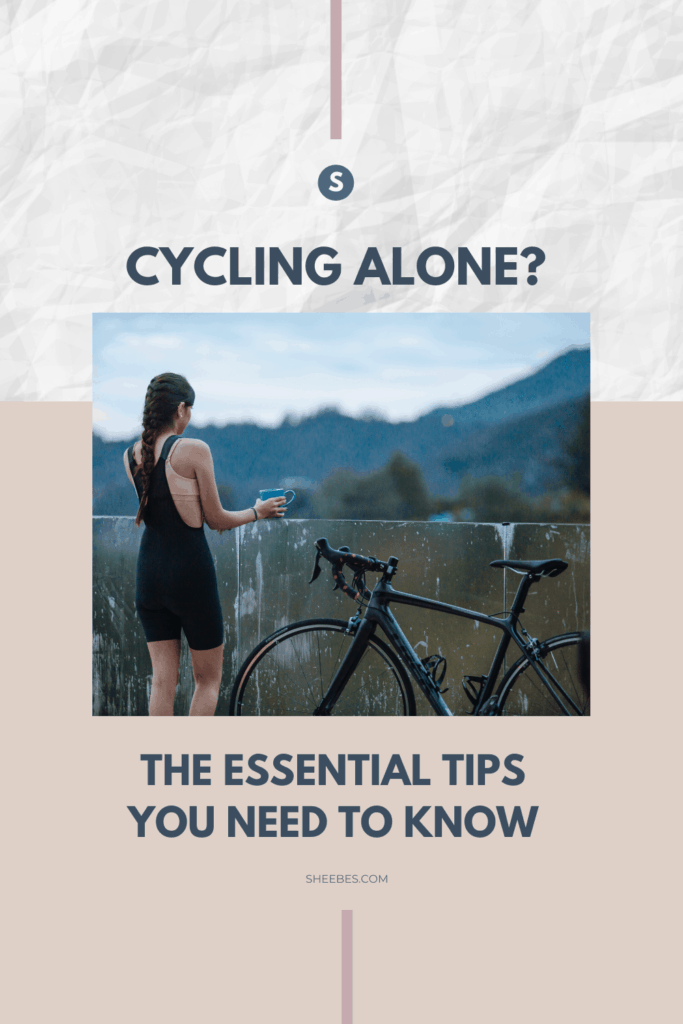
Are you *almost* ready to cycle alone and explore the world by bike?
But first, you’ve got to get some questions answered.
Maybe you’re wondering…
What road cycling essentials do I need?
Is it safe to bike alone?
How do I enjoy cycling alone?
You’re in the right spot because, by the end of this post, you’ll walk away with tips on:
- The essential road cycling gear you need to take with you on your bike ride
- How to stay safe as you’re cycling alone
- And how you can enjoy your bike ride as a solo bike rider
Let’s dive in.

Whether you’re a runner looking for running tips or a cyclist searching for cycling advice, this site is here to help you elevate your fitness game.
CYCLING ALONE? THESE ARE THE TIPS YOU NEED TO KNOW TODAY

Get these road cycling essentials
Before you head out on your bike ride, it’s a good idea to have a few key pieces of road cycling essentials for a safe and enjoyable bike ride.
Bike. If you don’t already have a bike then you’ll need to consider a bike that fits you in three main ways:
- Size: bike sizes range from extra small to extra large. A local bike shop can help you find the right size, but if you’d rather walk into the shop with a sense of what you need, then this bike fit guide will help.
- Budget: bikes range in price from several hundred to several thousand. In short, pricier bikes feature different frame materials and components.
- Cycling needs: there’s a bike for every type of riding you might want to do. Would you rather bike in the mountains or on the road? Do you want to ride on weekends, or do you plan to start racing?
💡 Dive into more cycling tips!
Now that you’ve bought your bike, it’s a smart move to do a bike fit. A bike fit is the magic ingredient that impacts your comfort, performance, and overall cycling enjoyment. So if you want to ensure your road bike fits you perfectly, come on over and check out this post on how to fit a road bike.
Helmet. A helmet is crucial, and depending on your country, wearing one may be a legal requirement.
But not any old cycling helmet will do, especially if yours was involved in a crash (if it was, replace it now).
Helmets have a limited lifespan, and the US Consumer Product Safety Commission (CPSC) recommends replacing your helmet every 5 to 10 years.
If you’re in the market for a new helmet, look for one that includes a Multi-directional Impact Protection System, or MIPS for short, such as this Bell Stratus MIPS Cycling helmet 1.
MIPS technology absorbs and redirects rotational forces, potentially reducing the severity of brain injury. If you’d like to learn more about MIPS, see here.
Front and rear cycling lights. Like helmets, front and back bike lights may be required depending on your country and local state laws.
Front bike lights brighten the road ahead, signal your presence to drivers and pedestrians, and reduce bike accidents 2.
If you don’t want to get too fancy, then this rechargeable front and rear cycling light set is a great affordable option.
Bike pump. A flat tire can put a damper on your ride, but a small portable bike pump ( Pro Bike Tool Mini Bike Pump) can get you back on the road quickly.
Bike computer. Need to know where you are on your route? Track your mileage? A bike computer, like can give you all the details.
Medical identification bracelet. You can convey important medical information quickly with a medical identification bracelet, like a RoadID Medical Alert bracelet.
With this, you can customize a faceplate to display medical information to First Responders, such as your emergency contact phone number and allergies.
Mini first aid kit. A first aid kit with a handful of essentials can be useful for minor injuries.
These two lightweight, packable first aid kits are made especially for cyclists: Brave Soldier Crash Pak First Aid Kit and Cycling First Aid Kit.
Multitool. A multitool—such as this Fix It Sticks tool that’s both lightweight and portable— can help you with off-road repairs.
Extra bike tubes.
💡 Dive into more cycling safety tips!
While it’s thrilling to go on a solo bike adventure, there’s there’s a bump in the road that many riders face: cycling safety.
But in this cycling safety post, we’ll bust through the confusion and dive into all the bike safety tips you need to know—from arming yourself with the cycling essentials to bike road rules, and much more, this post will cover it all.
Sheebes is here to help you grow as an athlete. To keep the lights on and content free, we participate in the Amazon Services program and other select affiliate networks. This means if you click on an affiliate link, Sheebes will earn a small commission, at no cost to you.
Garmin Varia RTL515 Rearview Radar with Taillight
- Stay Aware: Varia’s radar detects vehicles approaching from 140 meters behind, sending alerts to your Garmin Edge or smartphone.
- Navigate Safely: Gauge car distance with its clear display for timely lane adjustments.
- Be Seen: Visible up to a mile away, day or night, thanks to its powerful bulb.
- Long Battery Life: Up to 16 hours in flash mode ensures you’re covered for any ride.
- Cyclist-Friendly Features: Includes Peloton mode to dim lights and conserve battery.

Is it safe to bike alone? (Yes, if you use these bike safety tips.)
Whether you’re planning a short bike ride or a long one, these are the things to do before your bike ride.
Do a pre-ride bike check.
- Inspect your tires. Inflate your tires to the proper psi and check for any holes or tears.
- Examine your bike chain. Spin your pedals counterclockwise to ensure your chain is moving smoothly and noiselessly. If it’s not, you’ll want to clean and oil your chain.
- Check your brakes. Squeeze your brake levers to make sure they’re gripping your wheels or disc.
- Do a quick test ride. A short test ride down the street will alert you to anything else that needs attention.
Check your local bike laws. In specific states, wearing headphones may be illegal.
The reason? Headphones block critical sounds, such as an approaching vehicle, a cyclist might rely upon to navigate traffic.
Whether you’re pro or anti-headphones (or maybe wearing only one side) while cycling, it isn’t allowed in California, Rhode Island, and Virginia. 3
Want more cycling in traffic tips? Pop on over to this post to read 9 rules of the road for cyclists.
Vary your route.
If you like to cycle alone often at a specific time, use different routes to create unpredictability in your routine.
Use an app if you’re cycling alone.
bSafe, an app available for iOS and Android, tracks your location with live GPS tracking.
The app also includes a ‘Follow Me with Timer’ feature. You have bSafe follow your steps for a specific length of time. If you haven’t checked in when the time’s up, the alarm will alert your friends.
ROADiD, an app available for iOS and Android, uses an ‘eCrumb Tracking’ feature to share your location while riding.
If you’ve stopped moving for over 5 minutes, the ‘Stationary Alert’ will notify your selected contacts.
The app includes the ability to customize your phone’s lock screen to provide your medical information to First Responders in case of an emergency.

Tailwind Recovery Mix
Revitalize your post-workout recovery with Tailwind’s Recovery Mix – a delicious and hassle-free solution to kickstart your recovery process right after a ride.

How to enjoy cycling alone
Find bike trails near you. It may be less stressful and more enjoyable for you to find a bike-only path to ride on, especially if you’re learning how to cycle alone.
Ride your bike to a new coffee shop you’ve been meaning to try. When you’re cycling alone, you get to move at your own pace and to wherever you choose to go.
Pick a cycling goal. Maybe your cycling goal is to tour a nearby city by bike every month. Or maybe you want to try at least one group ride a month. Or maybe you want to do a bike race. A cycling goal can keep you from getting bored with your routine.
But the cycling tips don’t end here. I’ve got a pre-ride checklist you can grab today to prevent unexpected hiccups on the road. Just enter your email below to snag it now!

Sources
